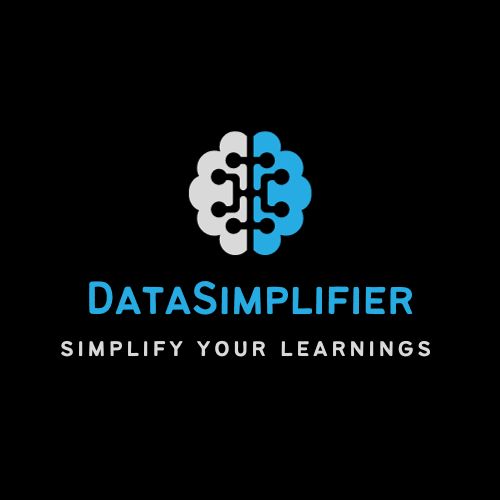Introduction
The AI and ML field is booming, creating a huge demand for skilled professionals who can bridge the gap between business needs and technical solutions. Among these crucial ones. role of Business Analyst stands out as a pivotal figure, acting as a link between stakeholders, developers, and data scientists. Business analysts translate business objectives into actionable technical requirements, ensuring successful project implementation.

Their role becomes even more significant within Agile Methodologies, where managing expectations and refining requirements is critical. Moreover, business analysts play an indispensable part in the Software Development Life Cycle (SDLC), making them invaluable assets to any team.
This guide is your ultimate resource to understand and excel in this role. Tailored for Indian students and professionals, it covers everything you need to succeed in interviews and advance your career as a business analyst in the dynamic world of AI/ML.
Understanding the Role of a Business Analyst in AI/ML Projects
A Business Analyst is more than a requirement gatherer—they are problem solvers, communicators, and facilitators who ensure alignment between business goals and technical execution.
Key Responsibilities
- Identifying Business Problems: Pinpoint issues that AI/ML solutions can address.
- Researching AI/ML Techniques: Explore existing methods that align with business needs.
- Collaborating with Stakeholders: Define clear project scopes and expectations.
- Translating Needs into Specifications: Convert complex business requirements into actionable technical specifications.
- Promoting Communication: Act as a liaison between diverse teams, ensuring clarity and understanding.
Importance in Agile Methodologies
In an Agile environment, a business analyst’s role is dynamic and iterative. They help refine requirements, manage stakeholder expectations, and ensure continuous alignment between the evolving project goals and development processes.
Skills and Qualifications

To thrive as a business analyst in AI/ML, you need a mix of hard skills and soft skills:
Hard Skills
- AI/ML Knowledge: Basic understanding of concepts like supervised learning, unsupervised learning, and data processing.
- Data Analysis: Ability to interpret data and draw actionable insights.
- Technical Proficiency: Familiarity with tools like SQL, Python, or visualization software.
Soft Skills
- Analytical Thinking: Solve complex problems systematically.
- Communication Skills: Effectively convey technical details to non-technical stakeholders.
- Collaboration: Work seamlessly with diverse teams.
- Adaptability: Stay agile in response to evolving project needs.
The Role of a Business Analyst in Agile Methodology
In Agile projects, a business analyst is central to maintaining alignment and facilitating iterative development.
Key Contributions
- Refining Requirements: Continuously update project requirements based on stakeholder feedback.
- Managing Expectations: Bridge the gap between what stakeholders want and what developers can deliver.
- Ensuring Value Delivery: Incrementally deliver features that provide measurable value to the business.
Why They Are Indispensable
Business analysts enable smooth communication between teams and ensure that every sprint or iteration delivers meaningful progress toward the project goals.
Interview Preparation Strategies

1. Understand AI/ML Concepts
Gain a foundational knowledge of AI/ML principles, including use cases relevant to the industry.
2. Highlight Collaborative Projects
Be prepared to discuss examples of projects where you worked as a liaison between teams.
3. Practice Problem-Solving Scenarios
Demonstrate your ability to translate business problems into technical solutions.
4. Mock Interviews
Engage in practice interviews to refine your responses and identify areas for improvement.
5. Familiarize Yourself with Agile Methodologies
Explain how you have contributed to iterative development processes and managed stakeholder expectations.
Real-World Examples and Case Studies
Case Study: Implementing AI-Powered Customer Support
A business analyst at an Indian fintech company identified a need for improving customer support using AI. Collaborating with stakeholders, they scoped an AI-powered chatbot project, defined requirements for developers, and monitored the solution’s effectiveness, which resulted in a 30% reduction in response times.
Case Study: Predictive Analytics for Retail

At a retail chain, a business analyst partnered with data scientists to implement predictive analytics for inventory management. They ensured that the project met business goals by clearly defining KPIs and facilitating communication between teams.
Conclusion
The role of a business analyst in AI/ML projects is critical to ensuring the success of any initiative. Their ability to align business objectives with technical execution, coupled with strong communication and analytical skills, makes them indispensable in today’s industry.
Whether you’re entering this field or advancing your career, understanding the responsibilities and skills required will set you apart. This guide equips you with the knowledge to succeed in your interviews and thrive in this role.
Join Our Exclusive Telegram Community
Take the next step in your career by joining our premium Telegram community! Network with professionals, access resources, and find support to achieve your goals. Comment your Telegram handle below to receive an invite.
Thank you for reading this comprehensive guide! Use it as your roadmap to success in the exciting field of AI/ML.
How Job Satisfaction is Measured
Share the post with your friends

1 thought on “Role of Business Analyst | Here is the Best and complete Overview of the business analyst in AI/ML”